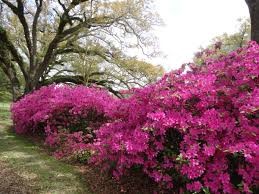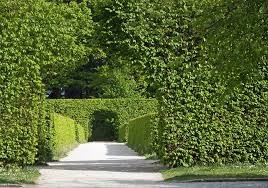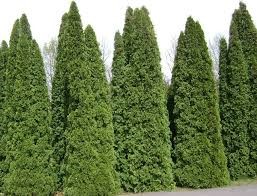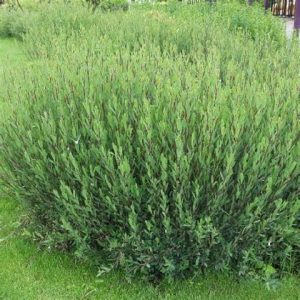Top 5 Natural, Living Fences: Grow Your Own Fence
Fences that mark off property can also add to the environment and beauty of a home; especially if they’re alive.
The use of hedges – shrubs or trees – in place of wood or stone constructs adds to the beauty of a yard. A living fence can serve as a wind break, sound barrier, or a tool to prevent soil erosion.
Legalities
Before dashing off to the nursery, be aware that even nature-made fences are subject to state and local laws.
Your local ordinance may include “naturally grown” or “naturally cultivated” in its definition of a fence and it may even specify which trees or shrubs can or cannot be used. There are often height restrictions which usually means keeping a living fence under 8 feet.
An exception, according to FindLaw.com, may be made when a fence is grown to protect property from noisy highways or other detractors.
Azaleas

If you’re in Takoma Park just outside Washington, DC in the spring, your senses will be dazzled by the profusion of azaleas lining yards throughout its streets.
Stewartsonian azalea (Rhododendron x Gable ‘Stewartsonian’), developed in Pennsylvania, produces orange-red flowers in Spring and rich mahogany leaves in Winter.
Stewartsonian prefers acidic and well-drained soil and thrives in partial sun settings. Zones 5 – 8.
Amazon’s top Azalea picks are pretty reasonably priced.
Boxwood

Buxus sempivirens (American Boxwood) is one of 200+ varieties of this favored shrub, according to the American Boxwood Society.
It was first planted on this continent on Long Island, NY circa 1653. It isn’t picky about soil and is deer-resistant.
Mites, fungi, and insects can be a problem so a watchful eye is needed. For inspiration, visit the Boxwood Memorial Garden in the Virginia State Arboretum or the U. S. National Arboretum in Washington, D. C.
Both gardens are maintained by the American Boxwood Society.
Zones 5 – 9.
Privet

North Privet (Ligustrum x ibolium), said to be America’s fastest growing hedge, gains up to 3 feet a year.
Dense, glossy, dark green leaves make it an ideal wind shield and noise barrier. It can reach up to 12 feet high with a 6 foot spread.
It makes a great medium for topiary fans. Check out this Pinterest page of giant cats, dragons, and swirly things for inspiration.
Zones 4-8.
Thuja

Thuja Emerald Green (occidentalis ‘smaragd’ – means ‘emerald’) originated in Denmark. It is a drought-resistant evergreen that, once established, creates impressive spires 10-25’ high and 3-8’ wide.
It enjoys full sun. The East Coast native Eastern arborvitae or Eastern white cedar is one of many varieties of this tree.
Thuja plicata, Arborvitae “Green Giant”, is an effective windbreak/sound barrier for very large properties. At maturity, they can reach a height of 60 feet and have a 12-20 foot spread.
Pro tip: The folks at plantingtree.com have a very nice selection of privacy trees and shrubs including the Thuja Green Giant, Leyland Cypress, Wax Myrtles, hollies, and lot’s of other live trees shipped to your door. They are experts in privacy trees, shade trees, flowering trees and shrubs, and even ornamental grasses
Zones 4 – 8.
Willow

Blue Arctic willow (Salix purpurea) grows up and out 10-15 feet. It is used as a windbreak and to prevent soil erosion.
Tough but prettily colorful year round, it produces red to purple tips and silvery catkins in spring. Males bear purple anthers that turn yellow and have leaves that are deep green to blue-green with silver or grey undersides.
Does a fair imitation of a waving field of wheat when the wind blows. Its ability to tolerate poor soil conditions makes it a favorite for new housing developments.
Blue willow is not at its best in high, extended humidity; thrives in moist/wet soil and spots where it gets at least 6 hours of sun daily. Zones 2 – 7.
Thanks for reading, and please share this article if you found it helpful.